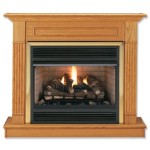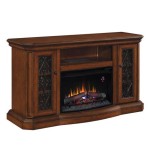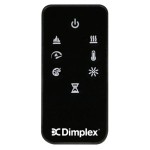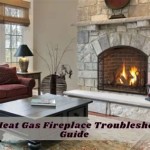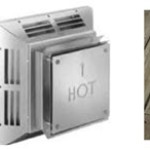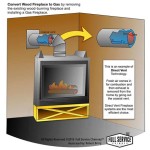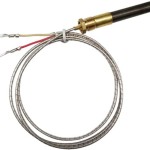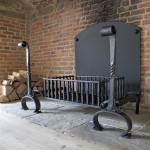Efficient Wood Fireplace: Maximizing Heat and Minimizing Waste
A crackling fire in a wood-burning fireplace offers a sense of warmth, comfort, and ambiance that is difficult to replicate with modern heating technologies. However, traditional fireplaces can be surprisingly inefficient, often losing a significant portion of heat up the chimney. With the increasing focus on energy conservation and sustainability, the demand for efficient wood fireplace solutions is on the rise. This article explores the key aspects of efficient wood fireplace design and operation, highlighting strategies for maximizing heat output and minimizing waste.
1. Fireplace Design and Construction
The foundation of an efficient wood fireplace lies in its design and construction. Key factors to consider include:
- Insulation: A well-insulated fireplace prevents heat loss through the surrounding walls and chimney. This can be achieved by using high-quality insulation materials and ensuring proper sealing around the firebox and chimney. Insulation not only improves efficiency but also enhances safety by reducing the risk of overheating.
- Firebox Size and Shape: The size and shape of the firebox play a critical role in determining combustion efficiency. A properly-sized firebox allows for optimal airflow and heat transfer. A larger firebox can accommodate larger logs, reducing the need for frequent refueling. A deep firebox with a narrow opening helps to concentrate heat and promote better combustion.
- Damper: A well-functioning damper is essential for controlling airflow and regulating heat output. When the damper is open, it allows fresh air to fuel the fire and draw smoke up the chimney. Closing the damper when the fire is not in use prevents heat loss and drafts.
- Chimney Design: The chimney plays a critical role in drawing smoke and gases from the fireplace. A properly designed chimney provides a straight and unobstructed path for exhaust, ensuring efficient venting. A properly installed chimney should be lined with fire-resistant materials and fitted with a spark arrestor to prevent embers from escaping.
2. Fuel Selection and Management
The type and quality of wood used can significantly impact the performance of a wood fireplace. Understanding fuel selection and proper management practices are crucial for efficient burning:
- Hardwoods vs. Softwoods: Hardwoods such as oak, maple, and hickory have a higher density and burn more efficiently than softwoods like pine and spruce. Hardwoods produce less smoke and ash, and they burn for longer periods, offering a more sustained heat source.
- Dry Wood: Moisture content is a key factor in wood burning efficiency. Dry wood with a moisture content of 20% or less burns more efficiently, producing less smoke and more heat. Wet wood produces a significant amount of smoke and can damage the chimney. Drying wood properly before burning is crucial for optimal performance.
- Proper Stacking: Stacking wood properly allows for better air circulation and drying. Storing wood off the ground and under a roof protects it from the elements and promotes drying.
- Fire Building Technique: Building a fire correctly is essential for efficient burning. A well-built fire should have a base of kindling, followed by progressively larger pieces of wood. Avoid overcrowding the firebox and allow for proper air circulation.
3. Advanced Technologies for Wood Fireplace Efficiency
Modern technology has introduced innovative solutions to enhance wood fireplace efficiency and minimize environmental impact:
- Heat Recovery Systems: These systems capture and distribute heat generated by the fireplace to other areas of the home. Heat recovery systems can be integrated into the fireplace design or installed as an add-on unit. They utilize a network of pipes and fans to transfer hot air from the firebox to other rooms, improving overall heating efficiency.
- Wood-Burning Inserts: Wood-burning inserts are prefabricated units that insert into an existing fireplace. They offer a significantly improved burning efficiency compared to traditional fireplaces, incorporating features like sealed fireboxes, advanced air intake systems, and catalytic combustors. Inserts are typically more efficient than traditional fireplaces, producing a significant reduction in emissions.
- Pellet Stoves: Pellet stoves are a modern alternative to traditional wood-burning fireplaces. They burn compressed wood pellets, which are a more efficient fuel source compared to wood logs. Pellet stoves typically have higher efficiency ratings and offer a more consistent and controlled heat output. They are also equipped with automatic feeding systems, requiring less manual intervention.

High Efficiency Performance Wood Fireplaces Valcourt

High Efficiency Performance Wood Fireplaces Valcourt

The Best Wood Burning Fireplace Inserts Or Stoves Ecohome

Is A Wood Stove Right For You Napolis In The Mad Hatter

Cleanest Burning Most Efficient Wood Stoves In The World Mountain Home Center

Superior Wct6940ws High Efficiency Wood Fireplace Fine S Gas

5 Efficiency Tips For Wood Burning Stoves Grand Designs

What Are The Most Efficient Stoves To Buy Direct

Energy Efficient Wood Burning Fireplaces

Burley Stoves And Fires Efficient Wood Burning Woodburners

